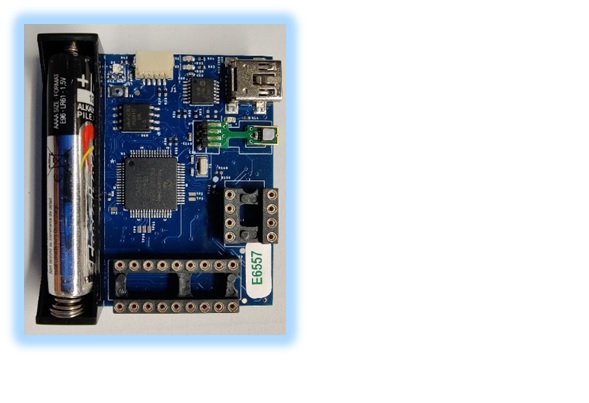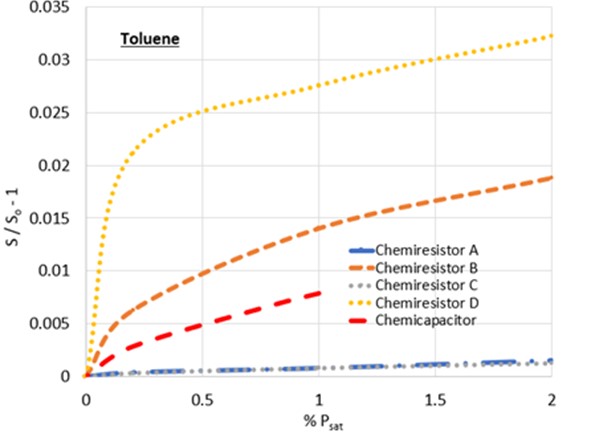Chemical Detection System/ Sensor Evaluation Kit (SC-214 μLogger)
The SC-214 μLogger is a state-of-the-art, compact, remote chemical vapor detection system. The device responds to a broad range of chemical gases in ambient air. It features an advanced microprocessor, onboard temperature and humidity detection, and an array of patented chemicapacitive and chemiresistive sensors. The unit can operate autonomously on battery power for up to 5 hours or can stream data indefinitely over USB 2.0 connection.
The SC-214 and nine-sensor array consists of one chemicapacitive sensor and one to eight chemiresistive sensors. Each sensor can be coated with a custom polymer designed to give unique responses to various classes of chemicals. This allows the user to tune the system for custom chemical detection applications. Temperature and humidity detection allow for the development of compensation and calibration algorithms.

